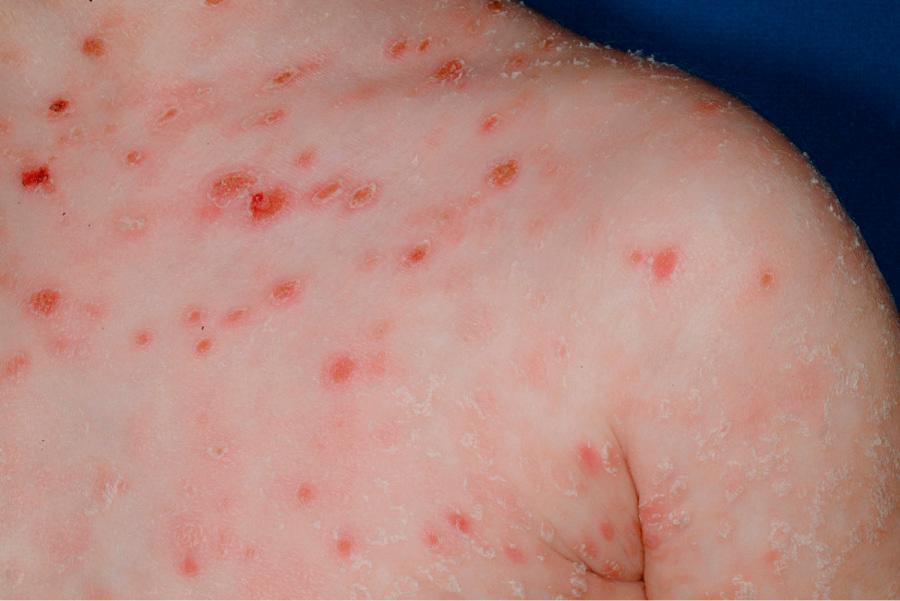Physical Address
304 North Cardinal St.
Dorchester Center, MA 02124
Relapsing polychondritis (RP) is a rare condition characterized by episodic chondritis causing cartilage destruction and deformation of the ears (sparing the earlobes), nose, larynx, and tracheobronchial tree. Antibodies to matrillin-1 and collagen (type II, IX and XI) are present in approximately 60% of patients with RP, suggesting an autoimmune pathogenesis. Patients may experience arthritis, uveitis, and hearing loss resulting from inflammation near the auditory and vestibular nerves. Children may initially relate episodes of intense erythema over the outer ears. Other dermatologic manifestations may include erythema nodosum, maculopapular rash, and purpura. Cardiac involvement, including conduction defects and coronary vasculitis, has been reported. Severe, progressive, and potentially fatal disease resulting from destruction of the tracheobronchial tree and airway obstruction is unusual in childhood. Diagnostic criteria established for adults are useful guidelines for evaluating children with suggestive symptoms ( Table 194.1 ). The clinical course of RP is variable; flares of disease are often associated with elevations of acute-phase reactants and may remit spontaneously. Although seen more often in the adult population, RP may coexist with other rheumatic disease (e.g., systemic lupus erythematosus, Sjögren syndrome, Henoch-Schönlein purpura) in up to 30% of patients. The differential diagnosis includes ANCA-associated vasculitis (granulomatosis with polyangiitis) (see Chapter 192.4 ) and Cogan syndrome , which is characterized by auditory nerve inflammation and keratitis but not chondritis. Many children respond to nonsteroidal antiinflammatory drugs, but some require corticosteroids or other immunosuppressive agents (azathioprine, methotrexate, hydroxychloroquine, colchicine, cyclophosphamide, cyclosporine, and anti–tumor necrosis factor [TNF] agents), as reported in small series and case reports.
| MAJOR |
| Typical inflammatory episodes of ear cartilage Typical inflammatory episodes of nose cartilage Typical inflammatory episodes of laryngotracheal cartilage |
| MINOR |
| Eye inflammation (conjunctivitis, keratitis, episcleritis, uveitis) Hearing loss Vestibular dysfunction Seronegative inflammatory arthritis |
* The diagnosis is established by the presence of 2 major or 1 major and 2 minor criteria. Histologic examination of affected cartilage is required when the presentation is atypical.
Pityriasis lichenoides et varioliformis acuta ( PLEVA ) is a benign, self-limited cutaneous vasculitis characterized by episodes of macules, papules, and papulovesicular lesions that can develop central ulceration, necrosis, and crusting ( Fig. 194.1 ). Different stages of development are usually seen at once. PLEVA fulminans or febrile ulceronecrotic Mucha-Habermann disease ( FUMHD ) is the severe, life threatening form of PLEVA. Large, coalescing, ulceronecrotic lesions are seen, accompanied by high fever and elevated erythrocyte sedimentation rate (ESR). Systemic manifestations can include interstitial pneumonitis, abdominal pain, malabsorption, arthritis, and neurologic manifestations. PLEVA has a male predominance and occurs more frequently in childhood. The diagnosis is confirmed by biopsy of skin lesions, which reveals perivascular and intramural lymphocytic inflammation affecting capillaries and venules in the upper dermis that may lead to keratinocyte necrosis. When disease is severe, corticosteroids have been used with questionable effect, and methotrexate has been reported to induce rapid remission in resistant cases. Cyclosporine and anti-TNF agents have also been efficacious in case reports.

Become a Clinical Tree membership for Full access and enjoy Unlimited articles
If you are a member. Log in here